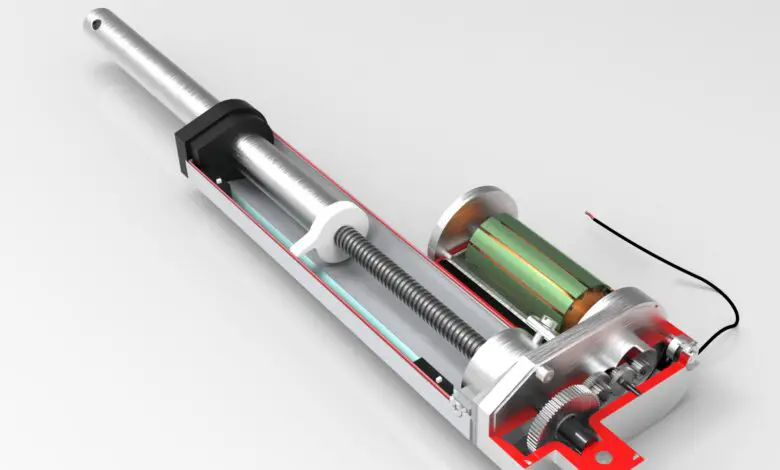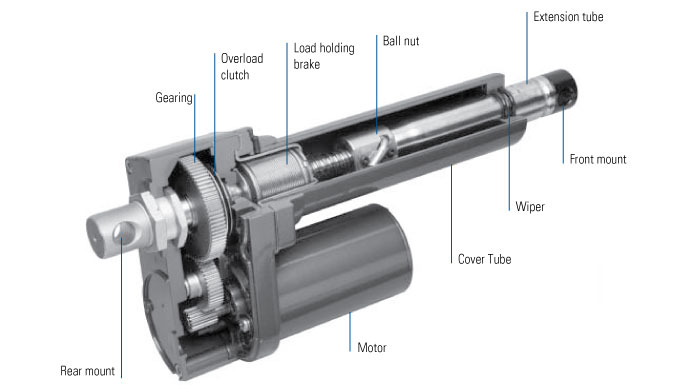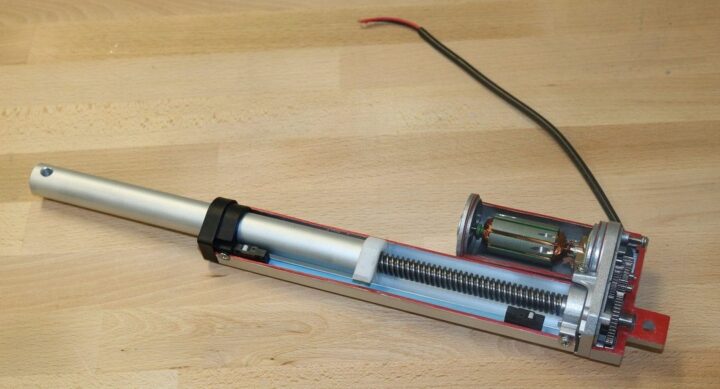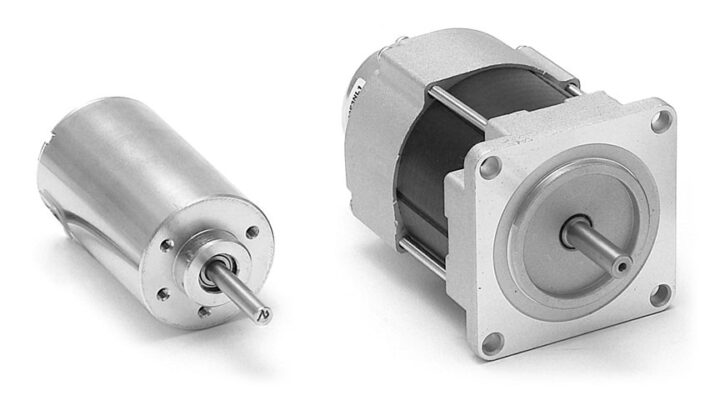What are linear actuators and how do they work?

What is a linear actuator exactly? Well, believe it or not, that is just a motor that instead of moving in a rotational direction it moves in and out along a linear axis hence the linear actuator.
The regular motor work as intended – when applied current they revolve around their axis and if you apply the current in the other direction they change their spin direction accordingly. With a linear actuator when current is applied in one way the shaft extends and when you apply current the other way, it retracts the shaft inside. Another thing that separates the regular motor from a motor in a linear actuator is that in a regular motor you don’t have any stops – if the current is applied continuously it will revolve in the same manner. In the motor that drives a linear actuator, there is an end stop to where the shaft can hit the end on the extension and then retract back to another end stop.

As far as the application goes these are used in any application where you want or need the linear motion instead of a rotational one. The ones that come on top of my mind are mostly every forklift out there and I saw some battle bots that use these for clamping down opponents. Thankfully these are not hard to find and there are shops everywhere just like tuli-shop.com and you can find them in any size and shape you need.
So, we already got in the gist of linear actuators, but what about their application. I already mentioned that there are plenty of these to find, whether new or second hand, but what you have to worry about are certain features of them and their intended application.
I mentioned that they are most commonly used in forklifts, and I mentioned fighting robots, but these are also very common in wheelchairs. Whether it is to regulate the height of the seat or its tilt or any other aspect of the wheelchair you have to have some info about the actuators features.
Let’s say you are making a motorized snow plough for your home and you need something that will regulate the height and tilt of the plough. These are awesome for the job but you have to have in mind that there could be several versions available. Most of them have some sort of a stopper for when the shaft extends far enough (or retracts) and they can be in a form of a diode that will stop the current from pushing it more to protect the actuator from damage. The other ones have electronic potentiometers that play the same role but they are a bit different and up-to-date.
Another thing to watch out for is if you are buying a linear servo. Yes, some of these actually can be linear servos which are taking everything one step further by putting the motor controller and put it inside and allow you to control it like any other servo – send a pulse command and it will travel wherever you dictated.

One thing to note is that these are not the fastest things around. They move slowly because precision is important but where they lack in speed they more than makeup with their power. Stopping a linear actuator is a difficult task and you would have to press it with so much weight to make it stop. When we are here that is another thing to consider when shopping for these. Their speed and their power are declared and some variations can help you pick the right one for the job you have for it.
As far as the complexity of the inside of the linear actuator there is not too much to it. When you tear one open you will see a motor that sends power to everything, a few metal or plastic gears, depending on the type and price of the actuator, and a shaft that goes in and out. Maintenance is also simple as that. If it seizes everything is easy to disassemble for cleaning and inspection. The biggest concern is to not fry the motor and lubricate the shaft according to instructions from the manufacturer. That should be all, unless one of the gears wears off or breaks then your job is to identify it and replace it, and that is it.
Since these are DC motors essentially you can spec them out for your project the way you need them. You will have to take care of the voltage the motor runs at and the current requirements behind that. This means you can run these at different voltages, and adjust them to your needs, meaning the amount of voltage put in them will proportionally relate to how fast they spin. Overvolting a DC motor is possible but you have to know that doing so means you will shorten its lifespan greatly and possibly damage a few other components as well.

This is something I almost forgot, and it is a few specifications that are unique for linear actuators and you won’t find those on a DC motor. One of them is stroke which is the most important part of the linear actuator and it dictates the travel of the shaft. Stroke is the total amount of travel or movement set to the shaft. Another spec is load rating, and this is something I already mentioned before, but what I forgot to say is that you will see a dynamic load and a static load rating. A static load is a force you can apply on the actuator before it fails while a dynamic load is a force the actuator can sustain on the thing that you try to use it with. And the last thing to pay attention to, and again it was mentioned, is the speed at which the linear actuator is moving. It will be rated and inches per minute or centimetres per minute depending on the place you buy them, and this will determine the time it needs to move from one position to the other.
So, all in all, a very useful tool that can come in handy in many things. The most important to repeat is that they are not too expensive, not too hard to operate and not too hard to maintain. They don’t break often as long as you stick to the speck of the one you bought.
